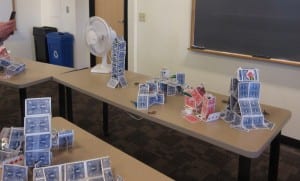A Lesson about Asking Questions from Zoe Reidinger in Biomedical Engineering
In Biomedical Engineering Design (BME 3300) our students work in small teams to solve a real world problem in a medical/healthcare field over the course of the term. The project for this term is to design, build, and test a portable incubator that is capable of culturing bacterial samples, without access to electricity, in the field in Namibia. We have partnered with researchers from UMass Medical School doing the bacterial work in Namibia and they will serve as our clients.
One issue we struggle getting across in the class is that the student teams need to ask a lot of questions from their client to make sure they are developing a device the client actually wants and will use. Many times, a client statement is unintentionally missing many important pieces of information because they were assumed, or the client doesn’t know the answer. In the past, we have found that this point is missed when we just lecture on the topic.
 This year we took an entire class period (50 minutes) to do an exercise. We handed out a client statement asking the students to build an observation tower out of playing cards and scotch tape. They were told that it had to be at least 12 inches tall, withstand weather conditions, and have space for 2 plastic army men to stand on top. They were encouraged to ask questions but we find that few teams do. At the end of the building period (30 minutes) the observation decks have to be brought up to the front and tested.
This year we took an entire class period (50 minutes) to do an exercise. We handed out a client statement asking the students to build an observation tower out of playing cards and scotch tape. They were told that it had to be at least 12 inches tall, withstand weather conditions, and have space for 2 plastic army men to stand on top. They were encouraged to ask questions but we find that few teams do. At the end of the building period (30 minutes) the observation decks have to be brought up to the front and tested.
As clients we test the structures through a battery of tests measuring that the tower isn’t too tall for state regulations in that area, the building is sturdy, and other tests I will not reveal here. This highlights the parts that were missing from the initial client statement that could have drastically changed the design process. For the last ten minutes of class we have a discussion about how the students feel (generally excited and frustrated) and how this activity can apply to the project.
The student’s get really engaged in the competition and always want to try again to make a better observation deck. This activity can be really frustrating but we want to make sure they understand that just because it isn’t specifically mentioned by the client, doesn’t mean it can be excluded from the design. It is better for students to learn this lesson in the first week of class instead of when the client gets to see the finished product at the end of term.
